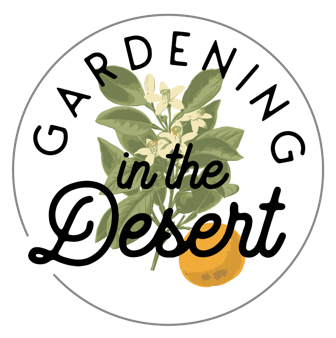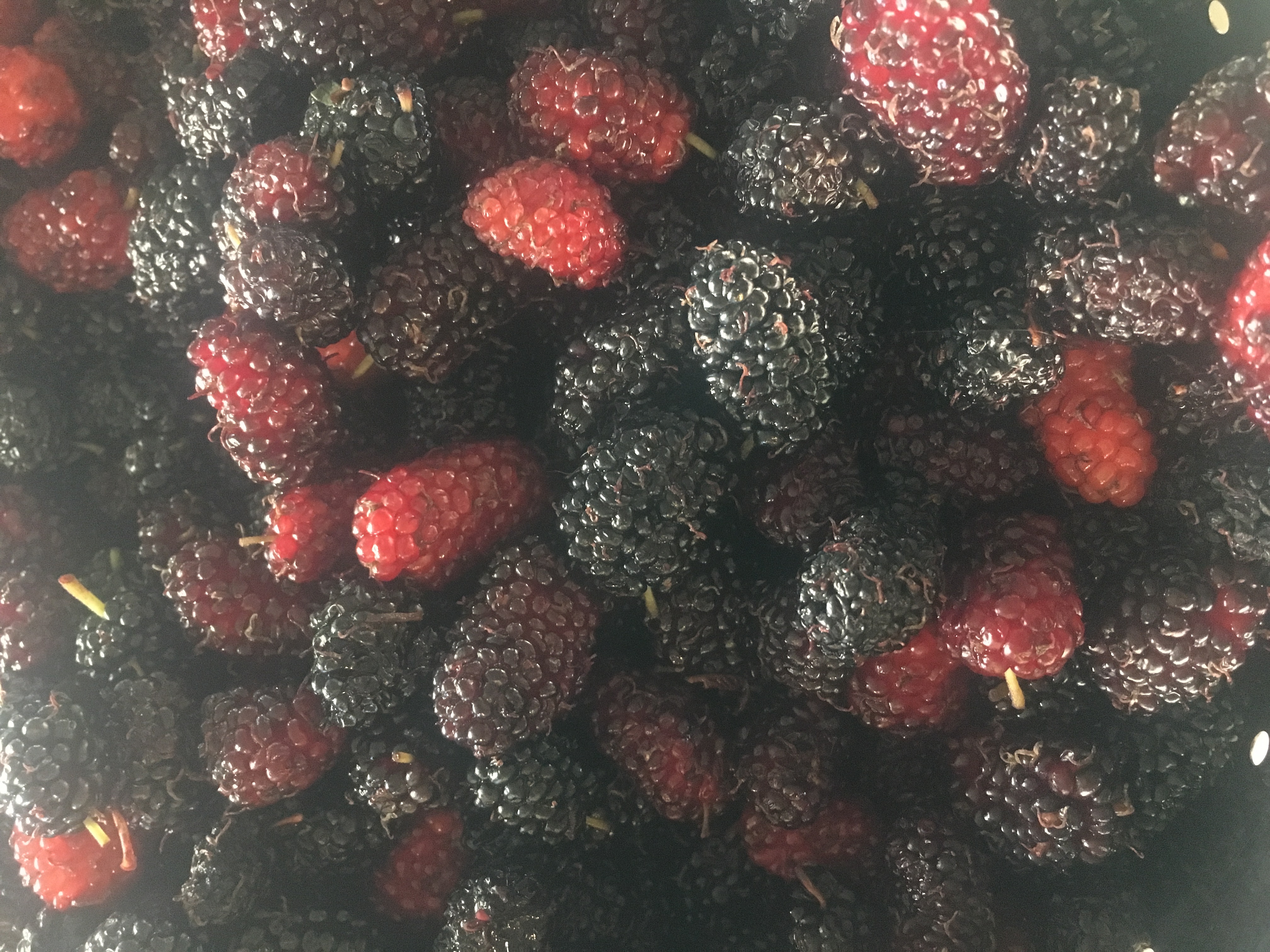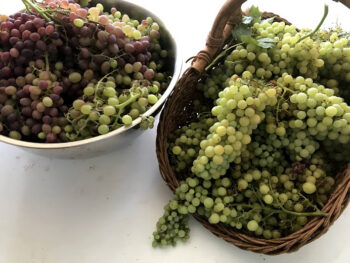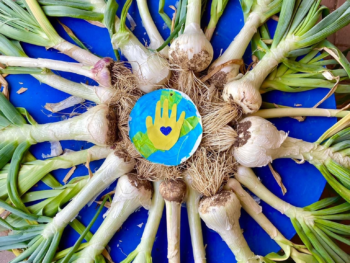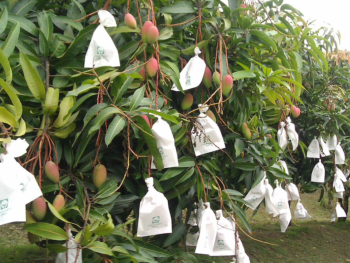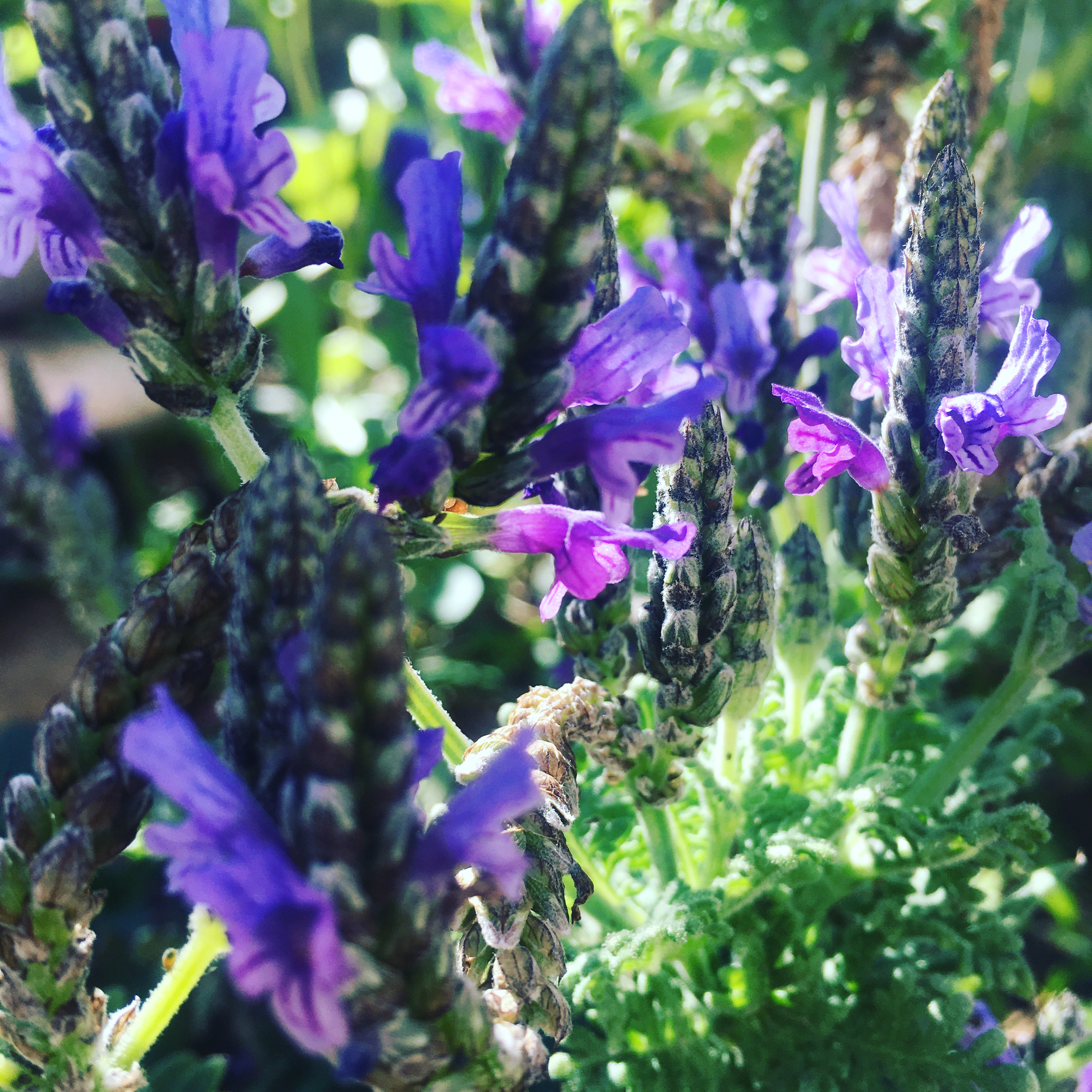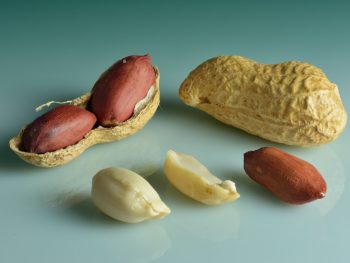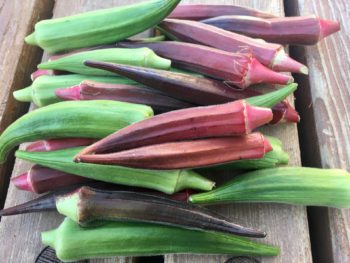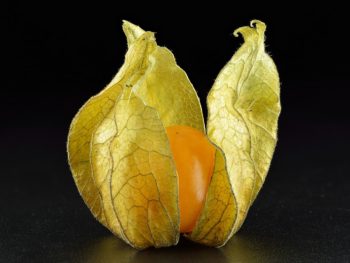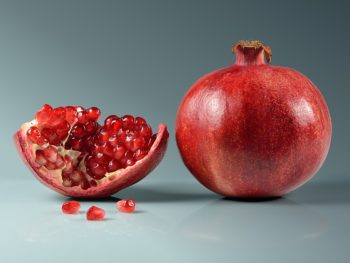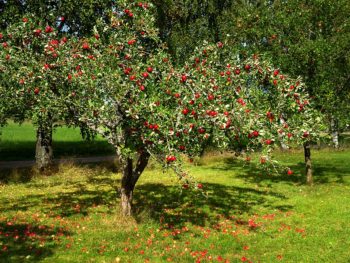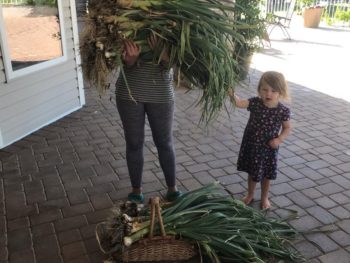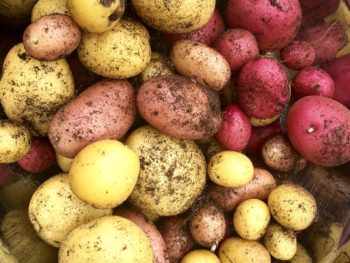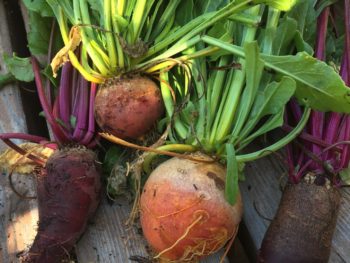LEVEL 1
FULL SUN
Full sun for best fruit production
pH
6-7 tolerant of various soils
FEEDING
Nitrogen, phosphorus, potassium
PLANTING
Fall through spring, October to April
The absolute easiest tree to grow! Mulberry tree seedlings often show up in gardens across Phoenix after the seeds have been “ planted by birds” They are native to Asia and North America and related to figs and jackfruit. Mulberry trees are either male or female and many mature male trees can be found across the valley. Male trees are not needed for the females to fruit, in fact, if berries are pollinated they tend to develop hard seeds. They are divided into 3 main species, Morus Niagra(black), Morus rubus(red), Morus alba(white), but there are numerous cultivars. Morus rubus is native to North America. While they can get very large and are well suited to large properties, they can also be grown in large containers and there are a few dwarfing varieties.
VARIETIES
When purchasing mulberries from a reputable vendor, it is safe to assume that cultivated varieties are female trees that will produce fruit.
- Pakistani: A very popular variety with very dark sweet fruit. The berries are huge around 3 inches long. A large tree best grown on a large property, however, size can be maintained by pruning.
- White Pakistani: Native to Southern Asia, this is the preferred food of silkworms, Huge trees with white/pink/purplish fruit. Very sweet non-staining fruit.
- Dwarf Everbearing: A great tree for a smaller garden. It produces prolifically and has sweet-tart berries that are much smaller in size compared to the Pakistani varieties.
- Weeping: Attractive weeping shape, this tree grows to about 15ft tall.
- Green shatoot: Turns a pale yellow when ripe. Sweet, 1-2 inch berries.
- Shangri- La: Produce black fruit that ripens early. A heavy-producing tree that grows about 20 ft tall.
Root Stock
No specific info.
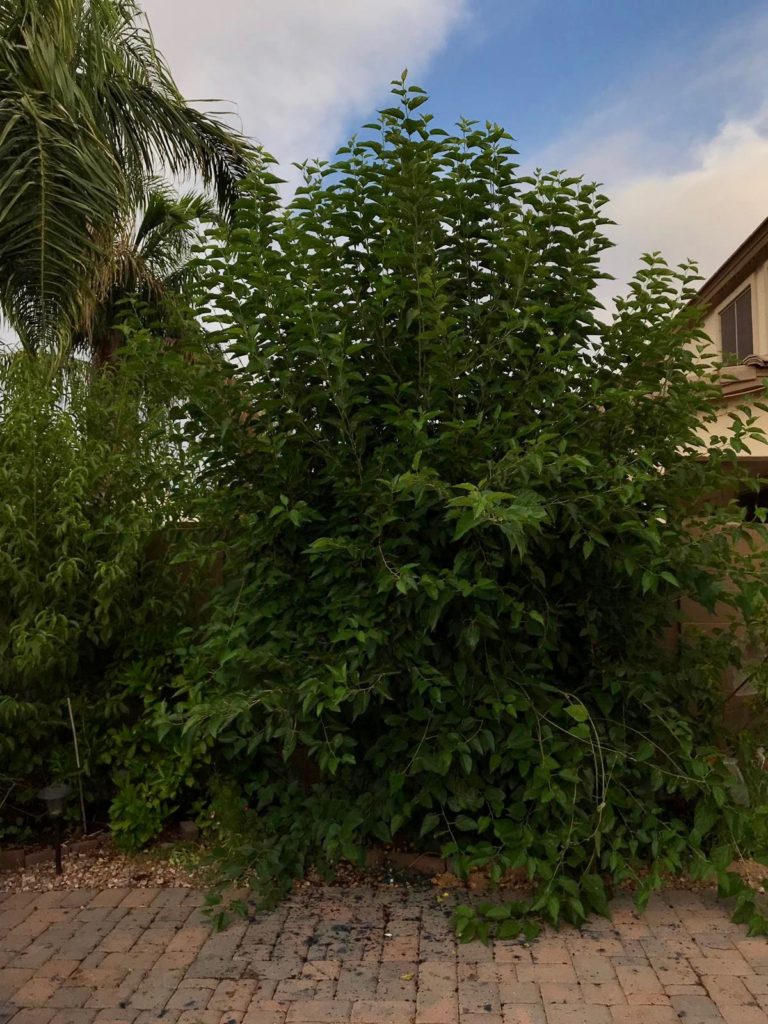
HOW TO PLANT
When purchasing mulberries from a reputable vendor, it is safe to assume that cultivated varieties are female trees that will produce fruit.
- Potted mulberry trees can be planted in fall through winter(Oct- Jan) and in Spring from January until April. Bare root trees are available from January to February.
- Plant your mulberry tree according to the instructions for bare roots or a potted tree found in the How To Plant a Tree Article.
- Do not mound soil up to the trunk. The root ball should sit just barely exposed in relation to the soil line.
- Once the planting hole has been back-filled, add companion plants and mulch, or add 3-6 inches of a mulch layer to protect the soil and conserve water.
- Water well, and keep the ground moist.
- If you are planting a bare-root, prune off the top third of the tree. This may seem harsh, but this helps direct the tree’s energy to produce a strong root system rather than maintaining the top growth.
- All tree trunks are very susceptible to sunburn in our Phoenix desert climate. The trunk will need to be protected, we recommend Ivy Organics 3-in-1 Plant Guard. Use the code DESERT10 for 10% off all purchases.
- In warm climates, some varieties tend to hold onto their leaves, rather than going completely dormant in winter. The leaves will fall off as the new growth comes in.
- Prune in late winter, approximately January for fruiting health. Prune in summer to help control size. Pruning tips
- Mulberry trees can be grown in large containers short term. Pick dwarfing varieties and consider root pruning every three years.

FEEDING AND FERTILIZING
Feed once a month with an organic fertilizer such as Earth’s Original Organics.
Mulberries are tolerant of a wide varieties of soils but adjusting the pH with sulphur is beneficial.
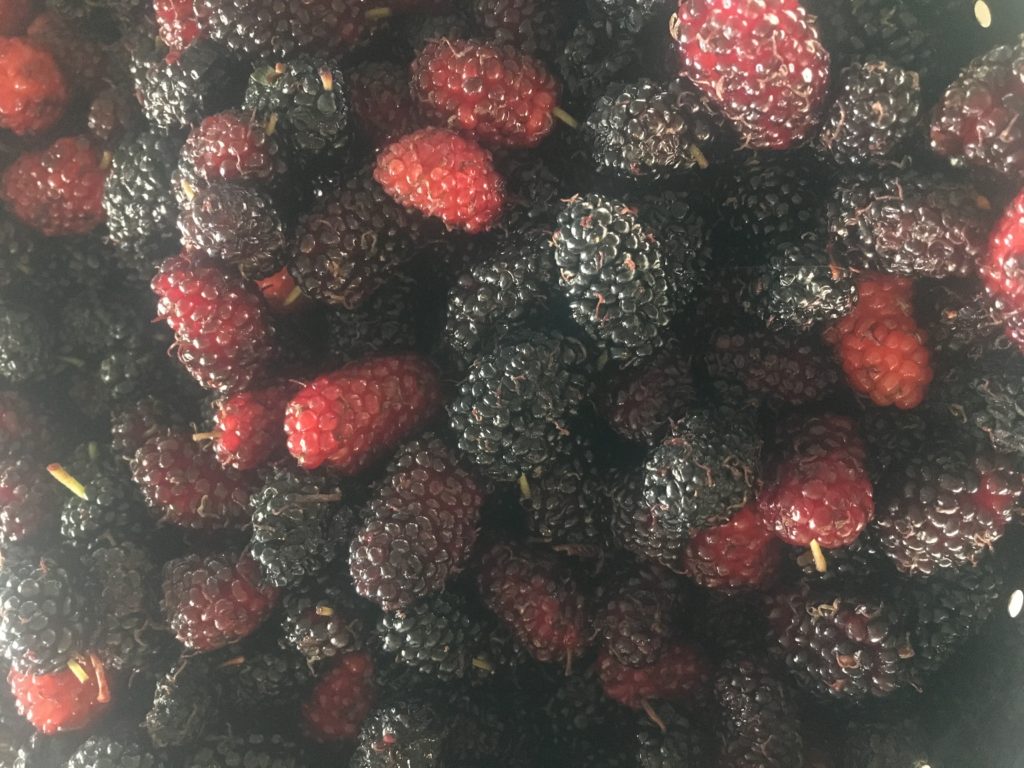
WINTER/SUMMER CARE
Mulberries require no additional care in winter. There is no specific summer care, they take full sun and benefit from feeding.
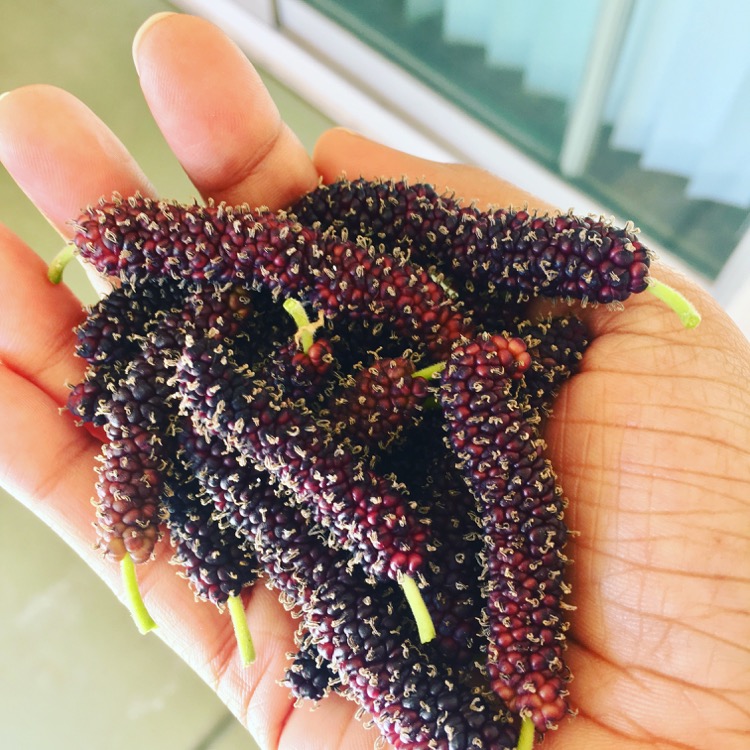
HARVESTING
Harvest when fruit have changed color. Ripe fruit falls to the ground easily. birds will also be attracted to the fruit once ripe.
COMPANIONS
All allium family plants such as garlic, chives, and onions make good companion plants.
Any herbs will make a good companion as well as any flowers.
In a permaculture tree guild borage, vetch, climbing beans, strawberries, thyme, and comfrey are used. Tomatoes, melons, and eggplants would also do well.
